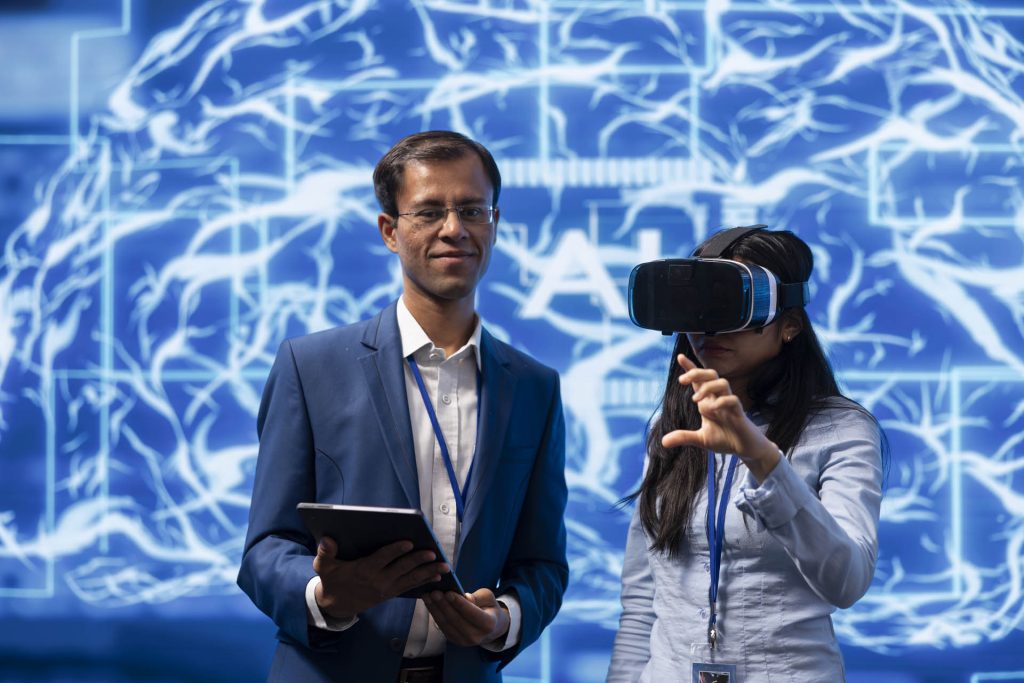
Our Augmented Reality (AR) and Virtual Reality (VR) research focuses on creating immersive, interactive, and intelligent visual experiences. By combining cutting-edge AI algorithms with computer vision techniques, we aim to bridge the gap between the physical and digital worlds, enabling applications in education, healthcare, entertainment, and beyond.
Ongoing Research
- 3D Scene Reconstruction
- Objective: Develop AI-powered systems to create accurate 3D models from 2D images or video streams.
- Progress: Implemented a neural rendering framework capable of real-time 3D reconstruction with 85% accuracy in complex environments.
- Human-Computer Interaction
- Objective: Enhance interaction in AR/VR through gaze tracking, gesture recognition, and natural language processing.
- Progress: Achieved seamless gesture-based navigation with a 95% recognition rate, improving usability in AR/VR headsets.
- Real-Time Object Tracking and Occlusion Handling
- Objective: Build robust systems to accurately track and overlay digital content on moving physical objects.
- Progress: Developed an occlusion-aware tracking algorithm that ensures realistic overlay of virtual objects in dynamic scenes.
- AR for Healthcare and Education
- Objective: Use AR to deliver interactive training modules for professionals and immersive learning experiences for students.
- Progress: Deployed AR-powered anatomy visualization tools in medical schools, improving student comprehension by 40%.
- Photorealistic Rendering for VR
- Objective: Create lifelike virtual environments for gaming, training, and simulations.
- Progress: Introduced a real-time rendering pipeline that delivers high-fidelity visuals with minimal computational overhead.
Key Results and Milestones
- Medical Applications: Developed VR-based therapy programs for patients with PTSD, demonstrating a 30% improvement in symptom management.
- Interactive Training Simulations: Partnered with the aerospace industry to create VR-based training modules, reducing trainee errors by 25%.
- AR Retail Solutions: Implemented AI-driven AR fitting rooms for online retailers, increasing customer satisfaction rates by 20%.
- Gaming and Entertainment: Contributed to the development of an AR gaming platform with real-time multiplayer capabilities and lifelike physics simulations.
- Cultural Preservation: Collaborated with museums to recreate historical artifacts and sites in VR, enabling virtual tours for global audiences.
Future Directions
Our next steps in AR/VR research include:
- Developing lightweight AR glasses for enhanced portability and usability.
- Exploring AI for personalized VR experiences based on user behavior and preferences.
- Improving accessibility features for differently-abled individuals in AR/VR platforms.
- Expanding AR/VR applications in urban planning and disaster management.

